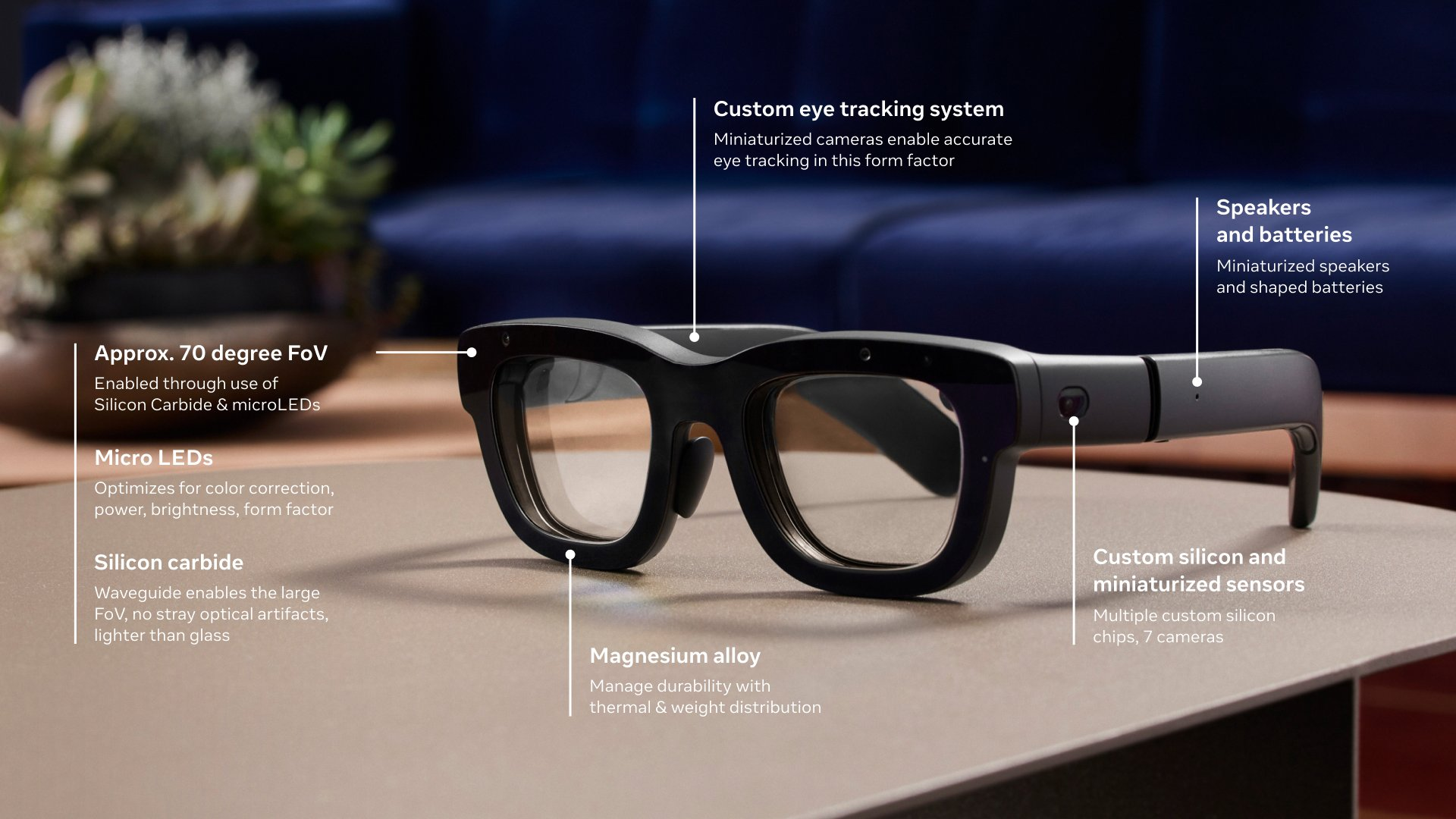Meta Orion
Meta Orion
- It weighs 98 grams and has a 70-degree Field of View (Vision Pro is around 110). Weight and POV trade off heavily. This is the best in the industry in the current form factor, but it could improve over time. I’ve included details of other competitions in the table below.
- Mass production for consumers is estimated to be two years away. (The project started in 2018, paused in 2022 for cost cuts, and picked up recently) Battery life ~2-3 hrs
- Orion’s hardware consists of three parts: the glasses, a “neural wristband” for controlling them, and a wireless compute puck resembling a large phone battery pack. The glasses don’t need a phone or laptop to work, but they must be within 12 feet of the puck.
- The glasses run all of the hand tracking, eye tracking, and specialized AR graphics algorithms while the app logic runs on the puck to keep the glasses as lightweight and compact as possible.
- The puck has dual processors, providing the computing power for low-latency graphics rendering, AI, and additional machine perception.
- Storage: It has on-device storage on the puck to tag objects, remember locations, and save.
- Cellular Modem: There’s a built-in modem for cellular data that isn’t active.
- Controls/Commands: AI voice control, hand tracking, eye tracking, and a wrist-based neural interface. It uses EMG (electromyogram) to read electrical current in muscles.
- Resolution/Pixels per degree(PPD): 13 pixels/degree. This is the less ideal part of the glasses. Quest 3 has 25 pixels/degree. Vision Pro: 34 pixels/degree. 4K TV at home from the couch: ~60-70 pixels/degree
- Features micro LED projectors inside the frame that beam graphics in front of your eyes via waveguides in the lenses.
- Material: Meta-picked silicon carbide for its durability, lightweight, and ultrahigh refraction index, allowing light to beam from the projectors to fill more of your vision.
- Heating and cooling: A custom silicon chip to process AI locally helps with heat dissipation to milliwatts. They have optimized hw and sw for this.
- Content: Key use cases are Meta AI, AR games, hands-free video calls, and virtual screens. While Meta AI can only talk to you on Ray-Ban Meta glasses, on Orion Meta AI can “help you through a task with visual guidance.”
